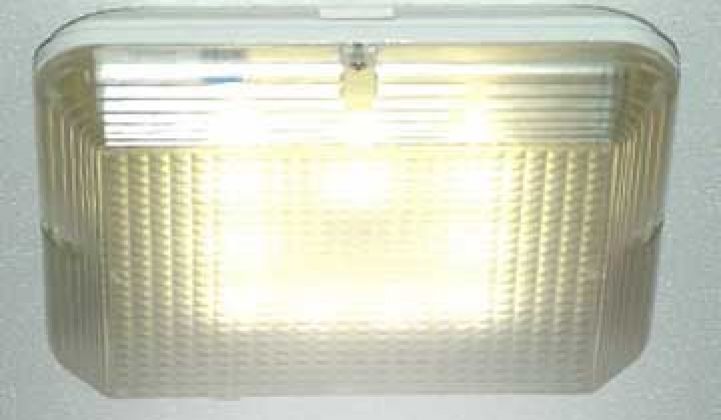One of the biggest advantages to light-emitting diodes, or LEDs, is their inherent controllability. That controllability means that people can create settings for when they’re home or away, or better yet -- a sensor can tell when people are in the room.
Unless of course that person is not a person, but rather a robot in a warehouse, where the lights aren't always needed for it to do its job.
An Australian LED company, enLighten, recently took a trip across the Pacific to introduce its technology to Bay Area investors after winning the 2012 Australian Clean Technologies competition. That technology looks a lot like various other companies that tout LEDs and controls. But there is one major difference.
EnLighten’s latest product, which will be released in a few months, takes out the human element, according to David Whitfield, CEO of enLighten. “From the grassroots, it’s philosophically different,” he argued.
The lighting system, which runs on a mesh radio network, is connected to what Whitfield called a “big brother” of an RFID card. Just like a building ID security card that most office workers carry around, the lighting card can tell the system where the people are. The company, however, also has other products that rely on more traditional motion sensors.
You might be thinking that seems redundant if there are occupancy sensors attached to the lighting network, but not so, says Whitfield.
He claims his company has a solution that’s far more cost-effective than those from competitors. Like other LED companies that are experiencing substantial growth, enLighten saw 500 percent growth year over year from 2011 to 2012. Whitfield said the average payback for its projects was about 18 months.
For warehouses or other industries where there are non-humans on the move, the solution does not turn off and on unnecessarily. “Because it’s a people-based system, we don’t have problems with equipment or other heat sources,” said Whitfield. For large office buildings, Whitfield argued that many people are already carrying access tags.
Like other LED companies, enLighten has realized energy savings from the technology is just the beginning. “It wasn’t until we were developing our lighting controls that we realized how much intelligence we were gathering,” said Whitfield. His company is currently talking to a large industrial building controls company and looking at HVAC companies that might be able to integrate enLighten’s information into their products.
EnLighten was traveling as part of an international Cleantech Open group in San Francisco, but it seems as if the company has plenty in Australia to keep it busy. Australia’s carbon tax will continue to fund energy efficiency investments as the country focuses on lower-carbon energy use at home while exporting much of its coal and gas to Asia.
EnLighten was primarily visiting the U.S. to meet investors, but there is plenty of competition from other startups in the LED space, such as lighting controls companies like Lumenergi and Daintree Networks to LED providers like Cree and Digital Lumens.
For now, there’s space for plenty of new ideas in the burgeoning market. “The awareness level is at the bottom of the hill, but it is already climbing,” said Whitfield. “Energy efficiency appears to be something that still hasn’t really been discussed by most people in business.”



